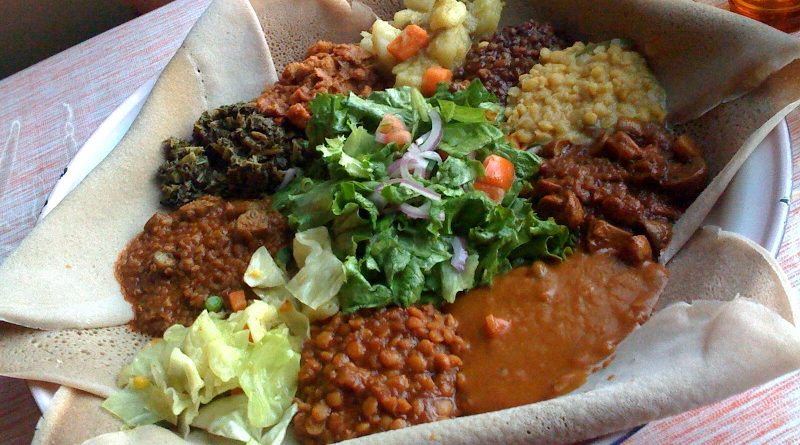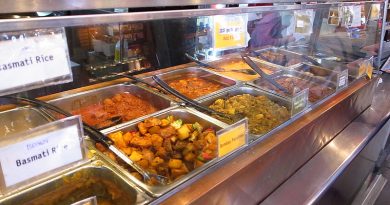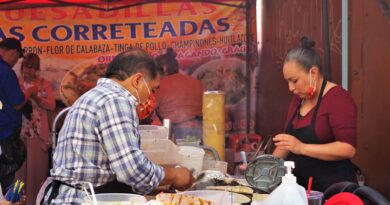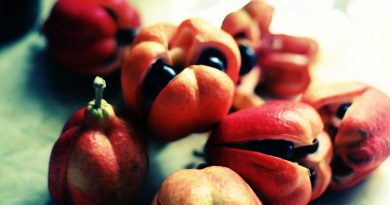The Food of Ethiopia
This is a country that serves up grass-fed beef and organic vegetables. The livestock graze in open fields because there are no factory farms, and vegetables are rarely treated with pesticides because farmers can’t afford the chemicals.
Everywhere — from dingy streets to polished hotels people of every age, class and occupation eat the same food and embrace the same traditions. Food has a primal role: to be filling, nutritious and packed with as much flavour as possible, whether it’s spicy chickpea hummus with caramelized onions, or grilled chicken dripping with a sweet yogurt sauce.
At the heart of every Ethiopian meal is injera. Basically a huge pancake, injerais made from tef, a sour-wheat-like grain that is mixed with cool water and a pinch of yeast. But unlike a pancake, it isn’t flipped over, so the topside remains spongy, the better to sop up the vegetables and meat in the saucelike wat (sometimes spelled wot or wett) that is ladled on top.
In a country where utensils are scarce, injera is not only your dinner plate, it’s also your knife, fork, spoon and sometimes napkin. When a platter of injera arrives at the table, covered in dips of vegetables and meats, it is immediately torn apart by everyone within arm’s reach.
Classic foods and local specialties
Injera is a spongy bread made from “Tef”, a sour wheat like grain. Injera is the building block of daily meals: A huge round pancake of Injera is the edible plate upon which various meats, vegetables and sauces are arranged. Tear off chunks of Injera to use as a tool to sop up sauces and food.
Raw spiced beef Kitfo is blended with melted butter and spices like red pepper, mustard seed and salt.
The Ethiopian Coffee ceremony is based on an at-home tradition of roasting over a small grill, then grinding and brewing.
Ethiopia’s most expensive coffee is Bun Harrari, favoured by Saudi Arabian customers. Its a specific type of bean from the eastern highlands, lightly roasted, brewed in a solid brass coffee pot with cardamom. When served is slightly greenish with a spicy taste.
Addis Ababa
This land-locked highland capital with a population of three million ,is a relatively new city, chartered in 1886 by the Emperor Menelik II. All 80 Ethiopian nationalities, speaking 80 languages, and practicing a wide variety of religions, are represented in the population here.
Food wise, Ethiopia may be most famous as the indigenous birth place of coffee. Coffee makes up over half its exports and is consumed locally in special, lengthy coffee ceremonies, as well as in cafes and now even in Starbucks-style outlets.
Addis Market
“Addis Merkato”, claims to be the biggest open market in Africa, covering several square acres of stands. Major wholesale coffee auctions take place here every day among the stands selling spices, street food, cheeses, and flavoured butters.
Addis Hot Spots
Teshomech Kitfo House: Best Kitfo in Addis Ababa
Agelgil National Food Restaurant and Hotel for its authentic coffee ceremony
Ethiopia is not a country people go to for food. But despite its lack of culinary fanfare, Addis Ababa, the capital city, has a rich and unexpected food culture.
Across town, down a bumpy dirt road, is one of Addis’s swankiest, but authentically Ethiopian, restaurants. There’s also a small stage in the center. The dinner consists of assa kitfo, or chopped fried tilapia. It arrives on injera, and with wedges of flat bread, along with traditional vegetable wats — potatoes, peppers, beans and onions in spicy sauces, all delicious.
At Agelgil, two men and two women, in tribal dress from the southern Oromo region, perform dances. The meal ends with a coffee ceremony — a ritual inherited from the countryside.
The top of the food chain in Addis Ababa is kitfo — raw, spiced beef — and nowhere does it better than the Teshomech Kitfo House. It is the preferred way to eat meat in Ethiopia, for those who can afford it.
TarikHouse is not only a butcher shop, it is also a restaurant. The dish of the house is tire siga, or raw meat. Unlike kitfo, tire siga is not mixed with warm butter or heated on the stove or served on a pretty banana leaf. The butchers carve generous slabs of beef while it’s hanging on the hooks, slicing it into fist-sized pieces and deposit it, with no frills, on a metal tray.




